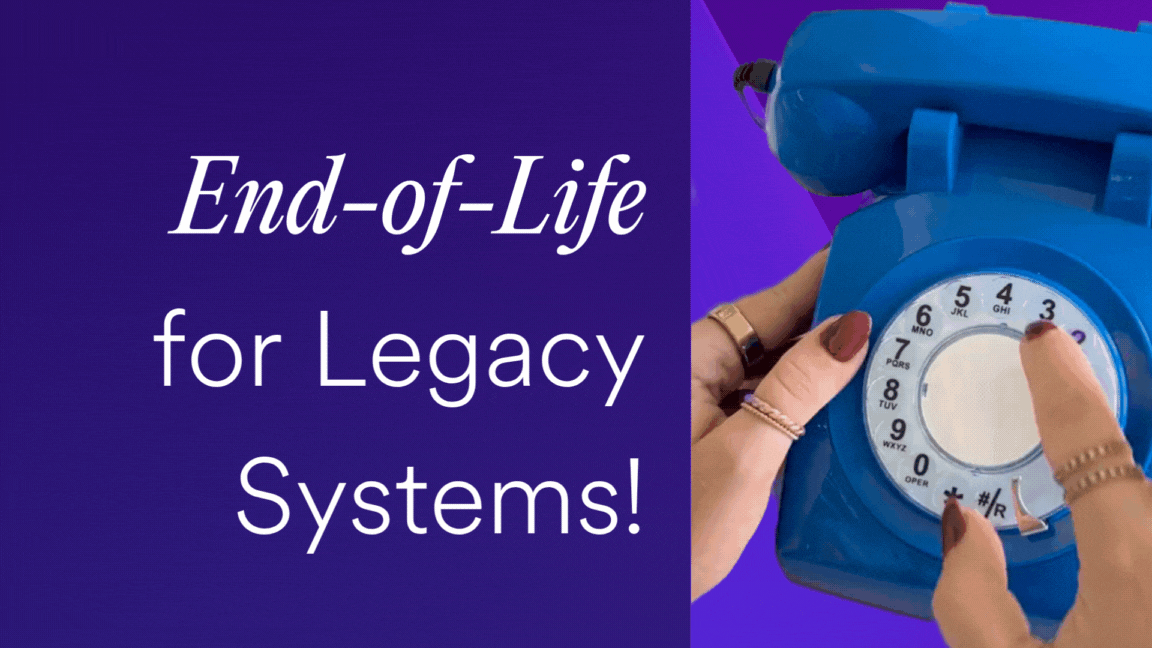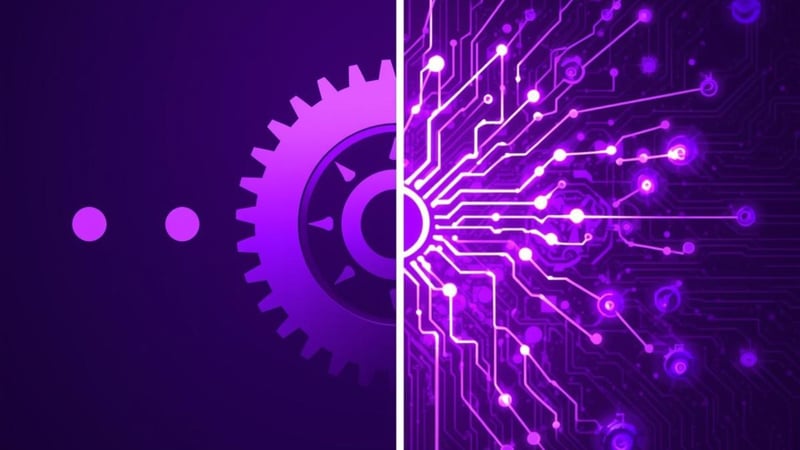PBX Migration Essentials for a Seamless Business Shift
Your Communications are at a Crossroads: The Modern PBX Migration

Table of Contents
The old phone system, likely residing deep in the telecom closet or server room, has served you well, but faced with modern business demands, it is clearly reaching its limits. This is especially true now that remote work and flexible team structures are the standard, making it impossible for legacy systems to keep up with the need for scalability and cross-location communication.
If this scenario sounds familiar, migrating your PBX system is likely inevitable. However, a successful switch is far more than just swapping out old hardware for new.
A PBX system migration is your opportunity to completely redefine your entire corporate communication strategy. It enables the seamless connection of every employee—regardless of location—and is the key to improving operational efficiency across your entire business.
What exactly is a PBX system (and why move on?)
A Private Branch Exchange, or PBX, is a private telephone network for your company. It handles all your internal and external calls, allowing you to route calls effectively. For a long time, these were physical boxes of hardware sitting in an office closet, known as a traditional PBX.
These legacy PBX systems use physical phone lines that run into your building, often connecting to analog phones. They require expensive hardware and a specialist to manage them. As you can guess, this setup has quite a few downsides today.
Then came the game-changer: the cloud PBX. Modern VoIP PBX systems are hosted online and use Voice over IP (VoIP) to make calls over the internet. This shift away from hardware to VoIP technology opens up a lot of new possibilities for businesses.
The problem with on-premise phone systems
Sticking with an old on-premise PBX system can hold your business back. The initial costs to buy and maintain them are often very high. You need to budget for the hardware, installation, and ongoing support for your PBX phone systems.
They are also surprisingly complicated. Getting a traditional PBX phone system configured correctly can take days of work from an expert. Because they depend on physical hardware and power, they can be unreliable if something goes wrong with your existing network.
The biggest issue? They just do not fit how we work anymore. A phone system tied to a physical office is not very useful when your team is spread out. This limitation became very clear to many businesses over the past few years, as it fails to meet changing business demands.
The telltale signs you need a PBX system migration
How do you know it's time to make the switch? Sometimes, the decision is made for you. Many big providers like Avaya and Cisco are ending support for their older models of PBX systems.
This is often called a product's "End-of-Life" or EOL. When a system reaches its EOL, it stops getting updates. This means no new features and, more importantly, no new security patches.
Continuing to use a system after its support ends leaves you open to security risks. It also gets harder to find replacement parts if something breaks. But there are other signs too that show it's time for a change.
- Your phone bills feel way too high for the service you receive.
- Your team needs communication capabilities your current system cannot provide.
- It is difficult for your remote or hybrid employees to stay connected.
Summary of PBX systems nearing EOL/EOS in 2025 and 2026
| System / Vendor | Status / EOL Date | Type of End-of-Life (EOL) |
| MiCloud by RingCentral (formerly Mitel MiCloud Connect) | June 24, 2026 (Final service disconnection) | Complete termination of the cloud platform. Customers must select a new provider by January 1, 2026. |
| NEC PBX Systems | 2026 (Complete market exit, excluding Japan) | No orders accepted after December 31, 2024. No new products shipped after March 2026. Customers must find an entirely new vendor. |
| Cisco Unified Communications Manager v12.5 | August 2025 (End of Support) | Sales ended in August 2023. Customers are advised to migrate to the latest on-premise versions or cloud solutions. |
| Genesys PureConnect, Multicloud CX, Engage | Early 2025 (Various products) | Several on-premise and hybrid CCaaS products are being phased out as Genesys moves completely to the cloud. |
| Mitel Connect On-Site (On-Premise) | December 2029 (End of Support) | Sale of new systems ended in July 2024. Existing customers receive support for several years but should plan for a migration soon. |
| Unify (formerly Siemens) | Discontinued (Rolled into Mitel offerings) | The previous structured product life cycles (OpenStage/OpenScape) are no longer in effect following the acquisition by Mitel. |
Why moving your phones to the cloud is a great idea
Switching from a legacy PBX to a cloud-based system brings some huge benefits. One of the most obvious is the cost. You stop paying for expensive hardware and just pay a monthly fee for the VoIP service you use.
Cloud systems are also built to grow with you. Adding a new employee to the phone system is as simple as adding a user in a dashboard. You do not need to buy more hardware like new IP phones or call in a technician.
This flexibility is perfect for today's work environment. An employee can answer their work number from a laptop at home or an app on their mobile phone. It does not matter where they are, as long as they have stable internet access.
More than just a phone
Modern cloud phone systems do more than just make and receive calls. They often come packed with advanced technologies and features that help your sales and support teams perform better. Think call recording, detailed analytics, automatic call distribution, and AI features.
You also get a single platform for unified communications. Many businesses are moving to platforms like Microsoft Teams for all their communication. You can have chats, video meetings, and phone calls all in one place, which simplifies your business communication.
💡 Good to know 💡
When your PBX system nears End-of-Life (EOL) or End-of-Support (EOS), delaying the inevitable only increases risk. Instead of clinging to outdated hardware, use this critical transition period to proactively investigate modern alternatives, secure the necessary budget, and fully prepare your team and stakeholders. A solid plan is essential to ensure your business communications remain seamless and secure.
Planning your successful PBX system migration
A move like this might feel like a big project, but a good migration plan makes all the difference. Breaking it down into a migration checklist will help you manage the process without disrupting your business. Let's walk through what you need to do for a smooth migration.
Step 1: Evaluate current systems & get everyone on the same page
The technical part of moving your phones is actually pretty straightforward. The real work is getting your people ready for the change. The biggest challenge is often the organizational shift.
Your starting point is to evaluate current communication methods and identify pain points. Talk to everyone who will be affected. This includes your daily users, department managers, and leadership.
Explain why the change is happening and how it will help them do their jobs better. When users are happy and comfortable with a new tool, they can provide a better customer experience. Making sure they feel involved from the start is very important.
Step 2: Build an overall communication strategy
Do not think of this as just a phone project. This is a chance to build a true communication strategy for your whole business. Stop scattering different functions across multiple tools and bring them together.
A platform like Microsoft Teams lets you build your business PBX on a single, powerful system. It connects departments, employees, and customers in a way separate tools just cannot. This enables smoother integration of chat, voice, video, and even screen sharing into every interaction.
This approach breaks down the walls between different parts of your company. It leads to more collaboration and a better journey for your customers. Telephony should be one part of this bigger picture of unified communications.
Your migration roadmap starts here
Ready to ditch the old PBX? Download your Free Guide now to unlock the secrets to cloud-native Teams integration and learn exactly how to modernize your communication strategy today!
Step 3: Pick your new platform and any add-ons
Once you know what you want to achieve, you can pick the right tools and service provider. For many, Microsoft Teams is a great central hub. But it cannot do everything out of the box, especially for a customer service contact center or a comprehensive CX platform.
Teams has some basic call routing features, but you will likely need more for a contact center or a busy reception desk. This is where third-party add-ons become essential. They fill in the functional gaps and give you the professional features you need.
Look for solutions that are built directly on top of Microsoft Teams from reputable service providers. This way, you are not creating new, separate systems. It helps you get the most out of your investment in the Microsoft platform after seeing a good platform overview.
Many providers offer a free trial, which is a great way to test the system before committing. Reading through customer stories can also provide insight into how the platform performs in a real-world setting.
Step 4: Create a rock-solid transition plan
With your new platform chosen, it is time to map out the transition. First, take stock of what you have now. Which phone numbers need to be moved over, and how many users do you have?
Before you begin the migration process, it is important to assess network readiness. Check your existing network infrastructure to confirm it has enough bandwidth capacity to handle increased voice traffic. Your network configuration may need adjustments for optimal performance.
Work with your new provider to set a timeline for the migration phase. A key part of this will be porting, which is the process of moving your existing phone numbers to the new service. Good planning here helps you avoid losing any calls during the switch, which is vital for a smooth transition.
Step 5: Prioritize security and training
Anytime you change a core business system, security needs to be a priority. You are moving your communications, so you have to protect that data during the migration. Talk to your vendor about the latest security measures they have in place.
Once the system is live, your work is not done. You need to provide training so your team feels confident using the new tools. Good user training helps you get the full benefit of your new system right away and is crucial for long-term success.
Happy employees lead to happy customers. Giving them the training and support they need will minimize downtime and make the whole project a success.
A quick comparison: traditional PBX vs. cloud PBX
To better understand the benefits, it helps to see a direct comparison. The differences in cost, flexibility, and features are significant. This table breaks down the key distinctions between the old and new ways of business communication.
| Feature | Traditional PBX System | Cloud PBX (VoIP) System |
| Initial cost | High (requires purchase of hardware, servers, and physical phones). | Low (minimal hardware needed, primarily a subscription-based service). |
| Maintenance | Requires specialized IT staff or external contractors for updates and repairs. | Managed entirely by the VoIP service provider, including all updates. |
| Scalability | Difficult and expensive; requires purchasing new hardware to add lines. |
Easy and instant: add or remove users through a simple online dashboard. |
| Remote work support | Limited or non-existent; tied to the physical office location. |
Excellent; users can make and receive calls from any location with internet access. |
| Features & integrations | Basic call functions; integrations with other business applications are rare. |
Advanced features like unified communications, CRM integration, and analytics are standard. |
Why move your contact center to Luware Nimbus?
The future of business communication is Microsoft Teams. But for superior Customer Experience (CX) and critical business processes, standard Teams calling is not enough. You need professional, measurable, and integrated contact center power, backed by advanced intelligence.
Luware Nimbus is the answer. It is a native, enterprise-grade Contact Center as a Service (CCaaS) solution built specifically to unlock the full potential of your Microsoft investment while elevating your CX strategy.
The problems Luware solves
-
Fragmented CX: Standard Teams lacks the sophisticated routing and deep CRM integration needed for a consistent, personalized customer journey.
-
Wasted Time & Errors: Agents waste valuable time "swiveling" between telephony and crucial business applications, hurting both efficiency and CX quality.
-
Lack of Intelligence: You need more than basic routing; you need AI-driven insights and automation to stay ahead.
The Luware advantage: CX, AI, and unified efficiency
| Feature | The Luware benefit | Why it matters to your business |
| Native MS Teams & Unified CX | Provides a single pane of glass for all communications, enabling seamless escalation from automated systems/Firstline to internal experts (Secondline/Thirdline). | Elevates CX by guaranteeing fast, expert-driven resolutions, breaking down silos and ensuring a unified customer journey. |
| Deep CRM Integration | Enables true screen-pop and allows agents to create tasks/tickets directly within the call interface, supported by the Nimbus Assistant for in-call context. | Optimizes CX by eliminating media breaks and ensuring agents always have immediate, personalized context to solve issues quickly. |
| External Task & Process Automation | Uniquely routes non-voice tasks (emails, administrative duties, outbound campaigns) through the same intelligent distribution engine as calls. | Maximizes agent productivity and ensures SLA compliance across all channels, significantly improving operational efficiency. |
| AI and Advanced Analytics | Features like AI-powered routing (skill-based) and detailed omnichannel analytics (including call recording data) are standard. | Drives better decisions and allows you to optimize staffing, predict demand, and leverage insights to continuously enhance the customer experience. |
Don't just migrate—strategize
. Speak to our experts about integrating Luware Nimbus into your current Microsoft and CRM ecosystem and start building your AI-powered CX roadmap today.
Frequently asked questions
A PBX migration can bring up several questions. Here are answers to some of the most frequently asked ones to help guide your decision-making process.
How long does a typical PBX system migration take?
The timeline for a PBX migration can vary based on the size and complexity of your organization. For a small business, it might take a few weeks. For a larger enterprise with multiple locations and complex call routing needs, the migration plan could span several months. However, we have demonstrated that large migrations can also be achieved quickly, as proven by the migration for the Belgian Ministry of Finance, which was completed in just 8 weeks.
The most time-consuming part is often the planning phase, which includes assessing your current setup and choosing a provider. The actual switchover, including porting numbers, is usually scheduled to happen quickly to minimize disruption.
Can I keep my existing phone numbers?
Yes, in most cases, you can keep your existing business phone numbers. This process is called number porting. It is a standard procedure handled by your new VoIP service provider, but it is important to plan it carefully within your migration timeline to prevent any service interruptions.
What happens to my old hardware, like desk phones?
With a cloud PBX, you have options. Many businesses choose to use softphones, which are applications on computers or mobile devices, eliminating the need for a physical IP phone. However, if your team prefers a traditional desk phone, you can purchase modern IP phones that are compatible with your new VoIP service.
Conclusion
Yes, moving away from your old phone system is a change, but it is a necessary one. Holding onto outdated technology simply is not a long-term option. A well-planned PBX system migration is more than an IT upgrade; it is a strategic move that prepares your business for the future.
You end up with a modern tool for employees that allows them to work from anywhere. The IT infrastructure gets simpler, and you gain a compelling communication platform for your customer interactions. With the right strategy, this transition can be a positive project with a lot of benefits for everyone involved.



